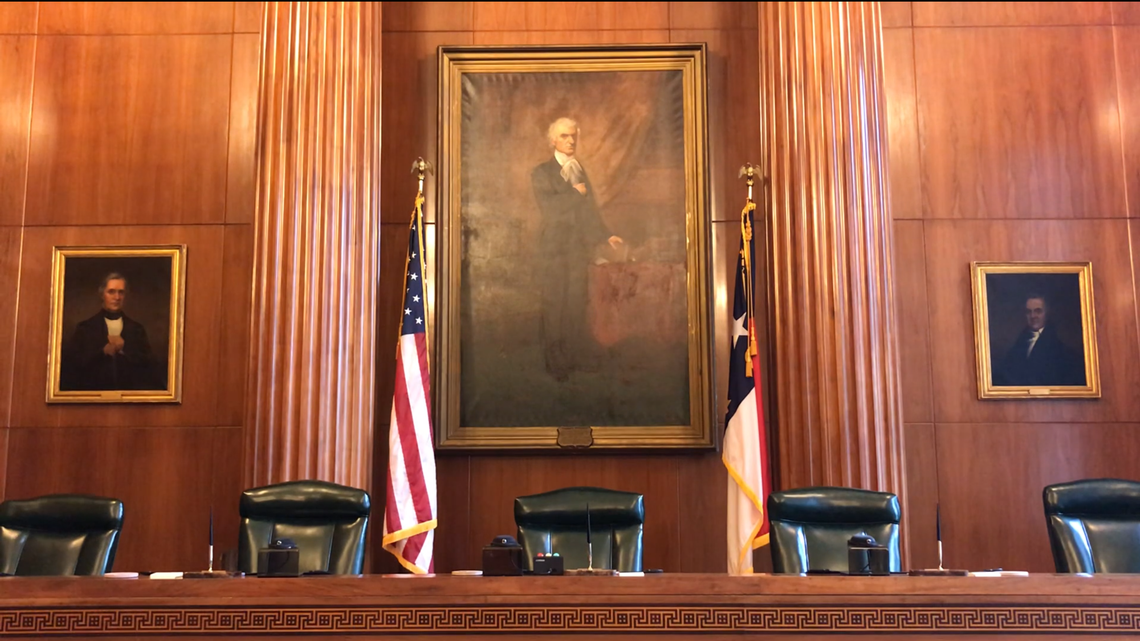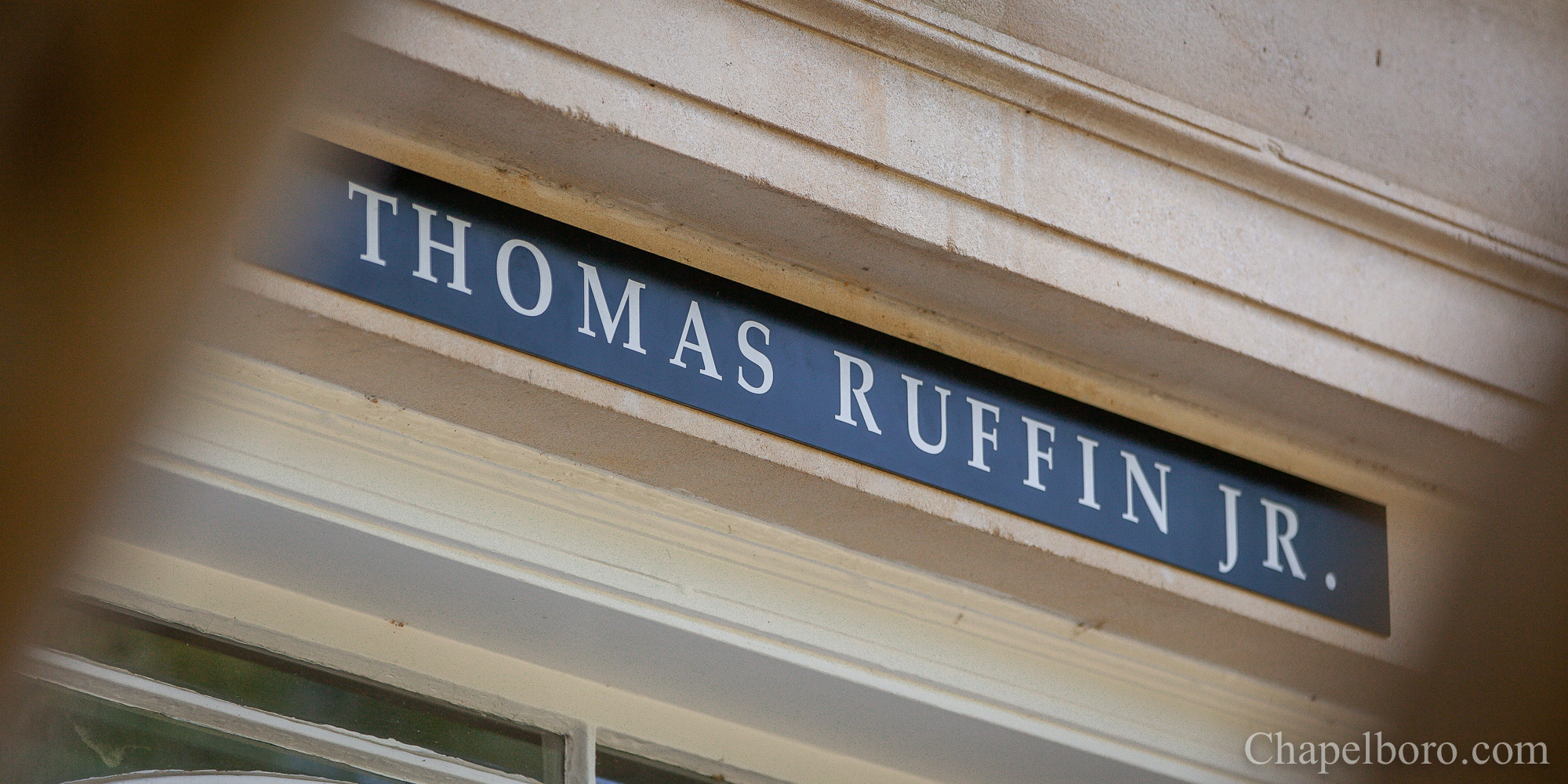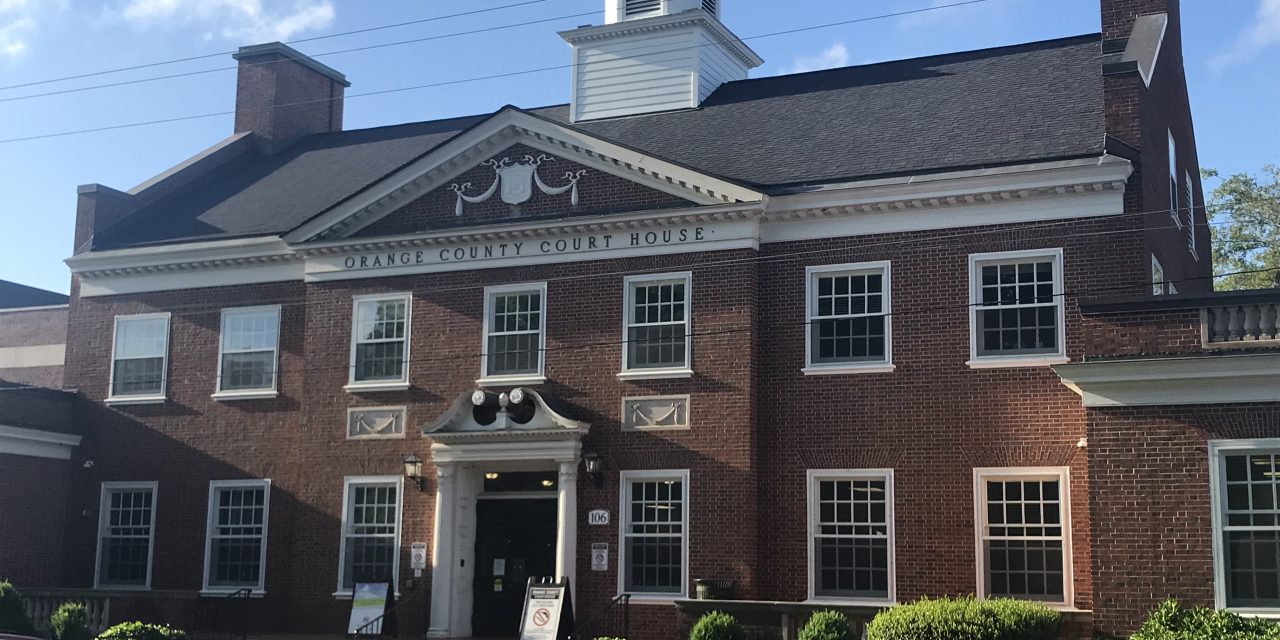A long-standing portrait of a former North Carolina supreme court justice has been removed from the Orange County courthouse.
Superior Court Judge Carl R. Fox requested the removal of Supreme Court Chief Justice Thomas Ruffin’s portrait “because of his racist past and his participation in slave trading and slave ownership.”
The county manager’s office has since complied with his request.
A push for the portrait’s removal came after research conducted by UNC law professor Eric Muller and Commissioner Sally Greene was published in 2018. Muller and Greene did extensive work studying Ruffin’s life and, in turn, revealed the truth about how he conducted his life as a slave master.
Thomas Ruffin is traditionally celebrated as “thorough improvement man.” He was chief justice from 1833 to 1852 and swiftly gained popularity while pushing for economic progress. But there was an underbelly to his success.
Muller and Greene’s research helped to uncover Ruffin’s State v. Mann ruling – dated back in 1829. This ruling gave enslavers “virtually unlimited powers of discipline.” In the words of Ruffin, “The power of the master must be absolute, to render the submission of the slave perfect.”
This language was broadly circulated, licensing extreme physical abuse, according to their research.
According to Muller and Greene’s 2018 opinion piece on the subject, Ruffin secretly partnered with a South Carolina man in a speculative slave trading business. Muller and Greene say that Ruffin’s personal life also “indicates little respect for enslaved people.” It is reported that Ruffin once took a cane to an enslaved woman who had come on to his property without permission.
Another portrait of Ruffin has hung in a place of prominence in the North Carolina Supreme Court since 1888. On the third floor of the Law and Justice Building in Raleigh, the portrait sits framed between two grandiose columns – three times the size of any other portrait.
A committee named by Chief Justice Cheri Beasley is in the process of considering the appropriate disposition for this and the other portraits in the Court’s collection, according to Orange County government. They are expected to continue deliberations through the end of 2020.
Related Stories
‹

Hillsborough Approves Removal of Thomas Ruffin From Street NameA former North Carolina Supreme Court Justice will no longer be honored as the namesake of a downtown Hillsborough street. The town’s Board of Commissioners unanimously voted on Monday to approve a petition from Thomas Ruffin Street residents to change its name. All 12 households on the town-owned road had voiced their desire for a […]

Hillsborough Residents Working to Change Name of Thomas Ruffin StreetSome Hillsborough residents are petitioning for a town street name to be changed from honoring a state Supreme Court justice with ties to white supremacy. The namesake for Thomas Ruffin Street, which runs through a neighborhood off North Cameron Street, has many ties to the area. Ruffin practiced law in Hillsborough and served as a […]

NC Supreme Court Removing Portrait of Slave Owner Ex-JusticeThe North Carolina Supreme Court announced Tuesday that it will remove a portrait of a former chief justice from its courtroom who staunchly defended slavery and owned slaves himself. Thomas Ruffin, a slave owner in the 1800s, believed an owner’s power over his slave was absolute. He once wrote in a court ruling that slaveholders should not […]

UNC History Commission Recommends Removal of 2 Campus Building NamesUNC’s Commission on History, Race and a Way Forward voted unanimously to remove the names of Thomas Ruffin Jr. and Robert Hall Bingham from campus buildings due to their ties to white supremacy. At its September 10 meeting, commission members voted unanimously to recommend the removal of the names. The commission sent their recommendations to Chancellor Kevin […]
![]()
Chapel Hill Officials Consider New Purpose for Old Town HallThe old town hall in Chapel Hill has hosted the homeless for years, but municipal officials are mulling over plans to repurpose the historic building. A committee was established last year to brief the Chapel Hill Town Council on potential uses for the property, which will soon be left vacant. Megan Dale, a municipal analyst […]
![]()
Rezoning Approved for Lincoln Center Expansion in Chapel HillLocal residents and school district employees appeared before the Chapel Hill Town Council earlier in the week to discuss the proposed redevelopment of the Lincoln Center. Kerry Moore, the director of preschool programs for Chapel Hill-Carrboro City Schools, steered the discussion toward plans to establish a centralized preschool on the campus. “If we were to […]
›






Comments on Chapelboro are moderated according to our Community Guidelines